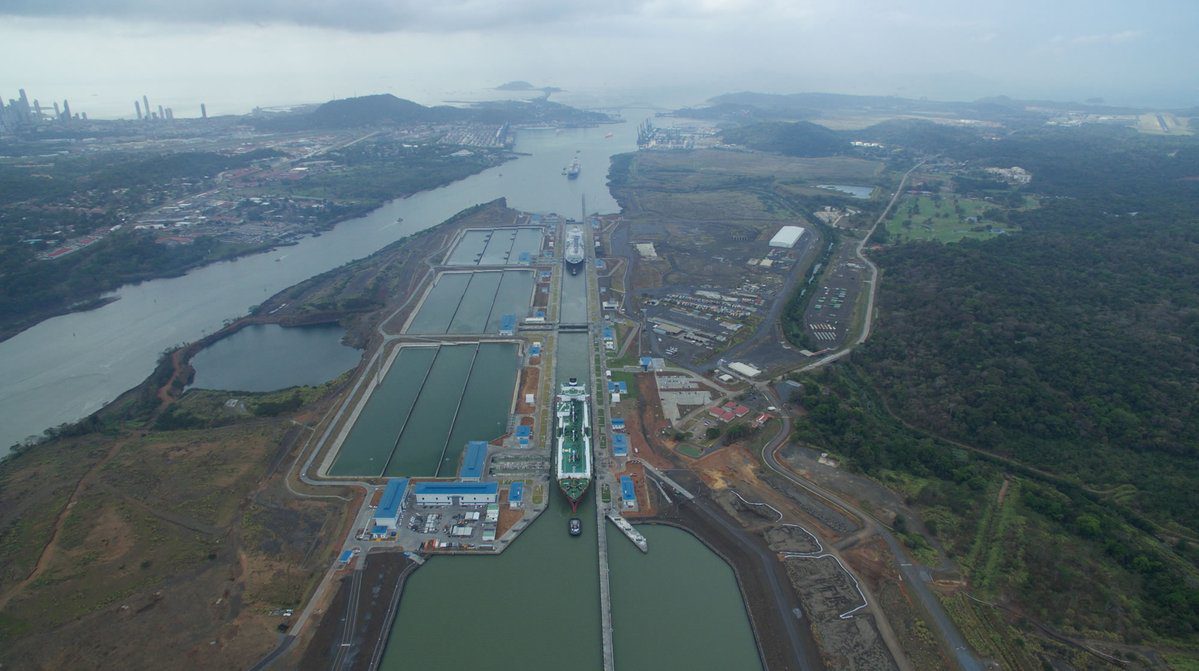The West’s Squeeze on Russian Tankers Gets Tighter
By Julian Lee (Bloomberg) — Another week, another gentle turning up of the heat by Group of Seven nations on the fleet of tankers moving Russian petroleum around the world, writes...


Three LNG carriers transit the Expanded Panama Canal, April 17, 2018. Photo: Panama Canal Authority / Jorge Luis Quijano


PANAMA CITY, Sept 5 (Reuters) – The Panama Canal‘s water levels have not recovered enough as the end of the rainy season approaches and limits on daily transit and vessel draft will stay in place for the rest of the year and throughout 2024, the waterway’s authority said on Tuesday.
The restrictions, implemented earlier this year to conserve water amid prolonged drought, triggered a backlog of ships waiting to pass the key global waterway, which handles an estimated 5% of world trade, contributing to more expensive freight costs ahead of the approaching Christmas season.
The bottleneck at the canal connecting the Pacific and Atlantic Oceans has eased about 20% since last week, but waiting times to transit the waterway doubled last month from July in some vessel categories, while many ship owners have opted for alternate routes to avoid costly delivery delays.
The authority that manages the canal added in a statement that this week’s ship traffic represents a “normal” level for this season.
It noted that a month before the end of its 2023 fiscal year, the canal’s total vessel crossings already total nearly 800 more that what the canal authority’s budget had forecast.
The additional vessel crossings, which contribute to a total of more than 13,000 transits so far during the fiscal year, show strong demand by vessel owners.
But insufficient rainfall continues to negatively impact the Gatun Lake, which feeds the canal, lowering its water level to 24.2 meters (79.7 feet), versus 26.6 meters (87.41 feet) for the month of September in recent years.
Each vessel passing through the 50-mile (80-km) trans-oceanic waterway uses some 51 million gallons (193 million liters) of water from the lake.
At the end of the rainy season in November, the lake’s water level typically reaches some 27 meters (89 feet) and then drops to slightly below 26 meters (85 feet) after the dry season ends in April, according to the canal authority.
Experts have warned about maritime trade disruptions ahead of what is shaping up to be an even drier period next year. They argue that a potential early start to Panama’s dry season and hotter-than-average temperatures could increase evaporation and result in near-record low water levels by April.
(Reporting by Eli Moreno; Additional reporting by Brendan O’Boyle; Writing by Marianna Parraga; Editing by David Alire Garcia and Michael Perry)
(c) Copyright Thomson Reuters 2023.
Join the gCaptain Club for curated content, insider opinions, and vibrant community discussions.


Join the 107,351 members that receive our newsletter.
Have a news tip? Let us know.
Access exclusive insights, engage in vibrant discussions, and gain perspectives from our CEO.
Sign Up




Maritime and offshore news trusted by our 107,351 members delivered daily straight to your inbox.



Essential news coupled with the finest maritime content sourced from across the globe.
Sign Up